Canine cognitive dysfunction syndrome (CDS) is a prevalent problem in pet dogs (Madari et al, 2015). It is estimated that over 28% of dogs aged 11–12 years and 68% of dogs aged 15–16 years suffer from CDS (Azkona et al, 2009). Females and neutered dogs were found to be at greater risk than males or intact individuals (Azkona et al, 2009). Additionally, a decrease in visual, auditory and olfactory ability has been linked to an increase in age-related behaviour changes (Szabó et al, 2018).
As with any behaviour change in dogs, it is important to rule out pain and disease as a cause (Landsberg and Araujo, 2005). While behaviour change is inevitable in senior dogs, they should be examined and treated for any signs of pain or age-related health issues (Landsberg and Ruehl, 1997).
A canine dementia scale (CADES) and canine cognitive dysfunction rating (CCDR) scale (Salvin et al, 2011; Madari et al, 2015) may help to assess a dog's behaviour change by scoring their cognitive decline from mild to severe.
Signs of CDS in dogs can include:
- Decline in memory function and learning
- Changes in social interactions with dogs and humans
- Decline in house training ability
- Change in activity patterns, such as sleep-wake cycle.
These changes can be described by the acronym ‘DISHA’:
- D: disorientation
- I: interaction changes
- S: sleep/wake disturbances
- H: house soiling
- A: activity changes (Landsberg et al, 2012).
Many owners are unaware that cognitive decline can be supported and slowed down using medical and behavioural intervention (Oscella et al, 2007). Clients and their dogs may therefore benefit from being asked questions based around canine dementia scales and the behaviour changes listed, followed by advice where appropriate.
Individuals benefit most from early intervention (Tynes and Landsberg, 2021) using a multimodal approach that combines behaviour management and veterinary treatment. While nutraceuticals and diet may also reduce cognitive decline (Landsberg and Ruehl, 1997; Nippak et al, 2007; Osella et al, 2007; Tynes and Landsberg, 2021), it is important that owners are made aware of behavioural symptoms they may observe and the ways in which they can support their ageing dogs (Figure 1).
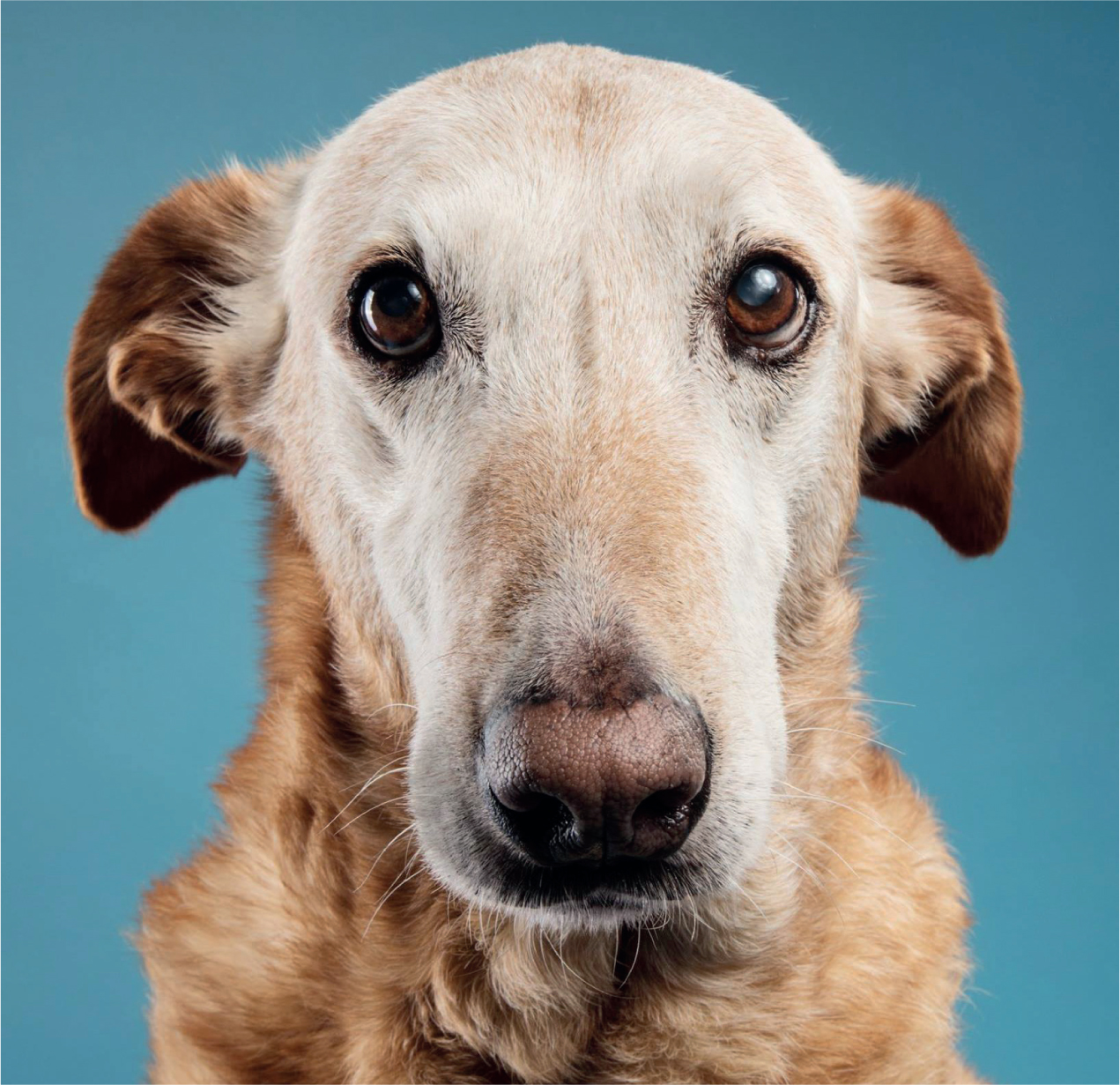
Decline in memory function and learning
Owners may note a decrease in responses to well established cues (Landsberg and Araujo, 2005). This may result from dwindling eyesight and hearing (Landsberg and Ruehl, 1997; Szabó et al, 2018). Owners can consider adapting their cues to help their dogs perceive them, such as by using hand signals, tactile stimulation or a slightly louder voice.
Training sessions can be beneficial to dogs of all ages, providing them with important mental stimulation, and should be maintained into a dog's senior years (Figure 2) (Chapagain et al, 2017). However, training sessions may need to be shorter in duration and set a lower criterion (difficulty rating) to help set older dogs up to succeed and maintain confidence.
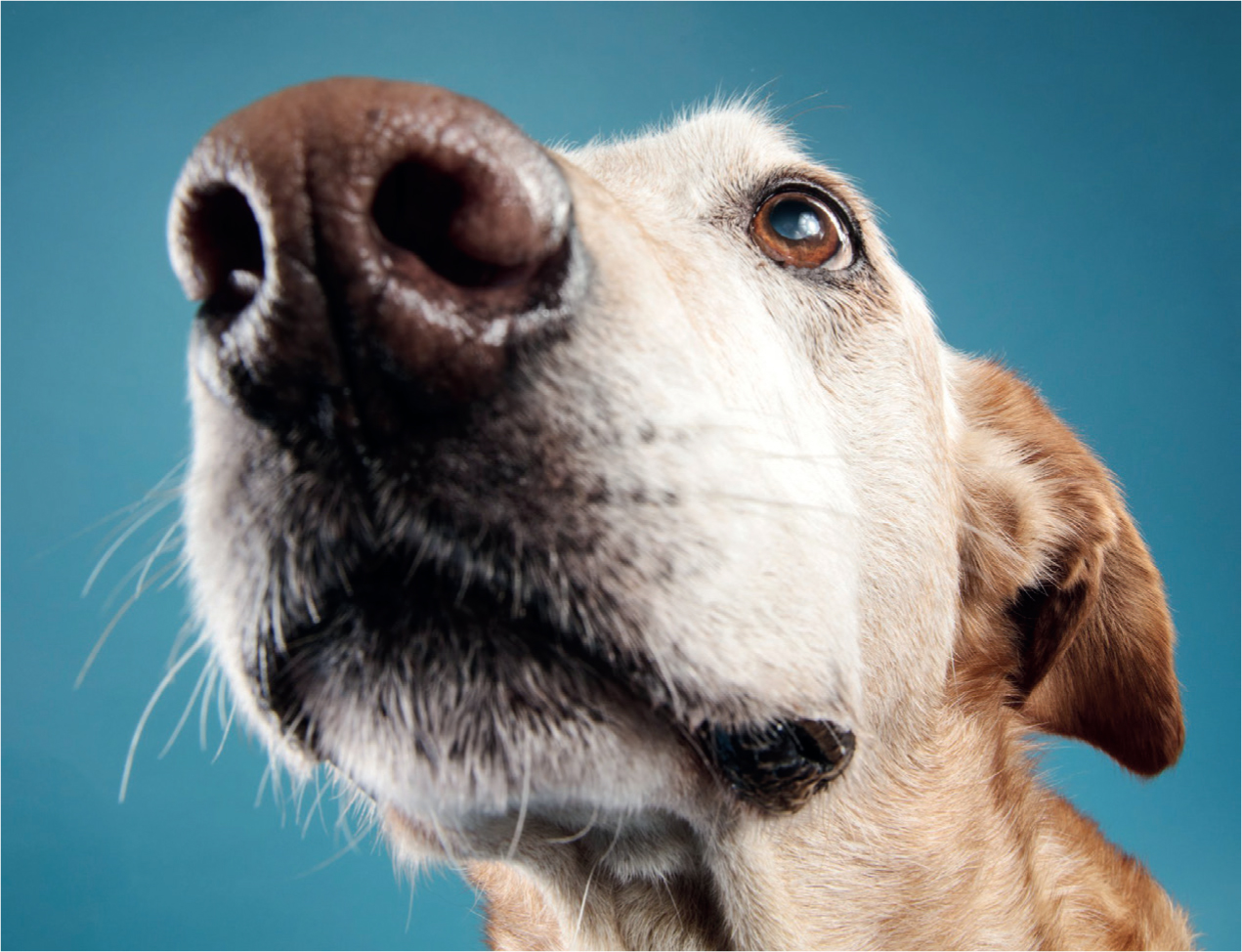
Gentle training sessions and other enrichment activities, such as food puzzles and gentle outdoor exercise (Figure 3), may buffer cognitive decline (Nippak et al, 2007; Chapagain et al, 2017; Szabó et al, 2018). It is important that any enrichment activities are not physically punishing for the dog to engage in. As an example, the author raised her dog's snuffle mat on a chair, as he would struggle to balance and maintain a nose-to-ground position for long durations (Figure 4).
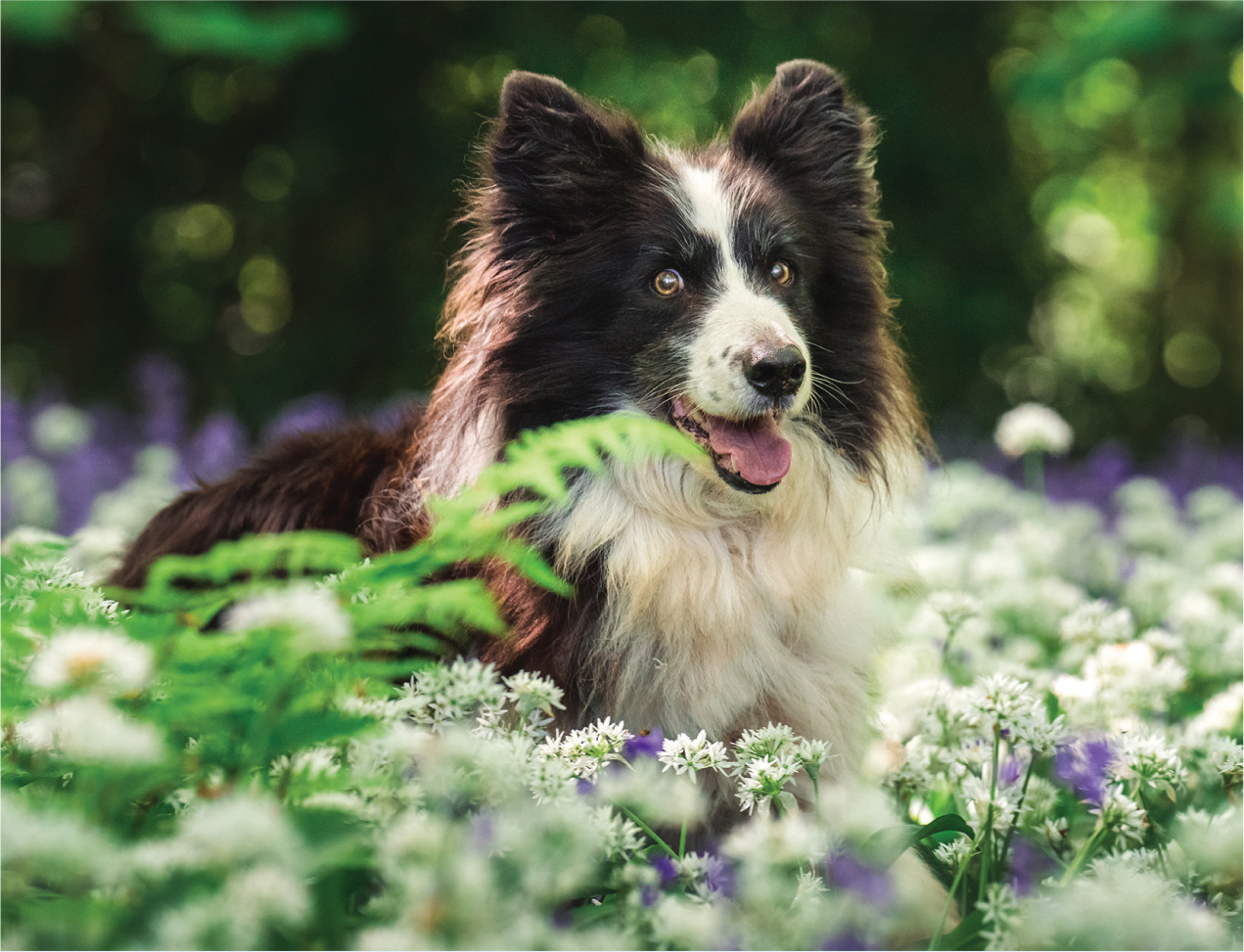
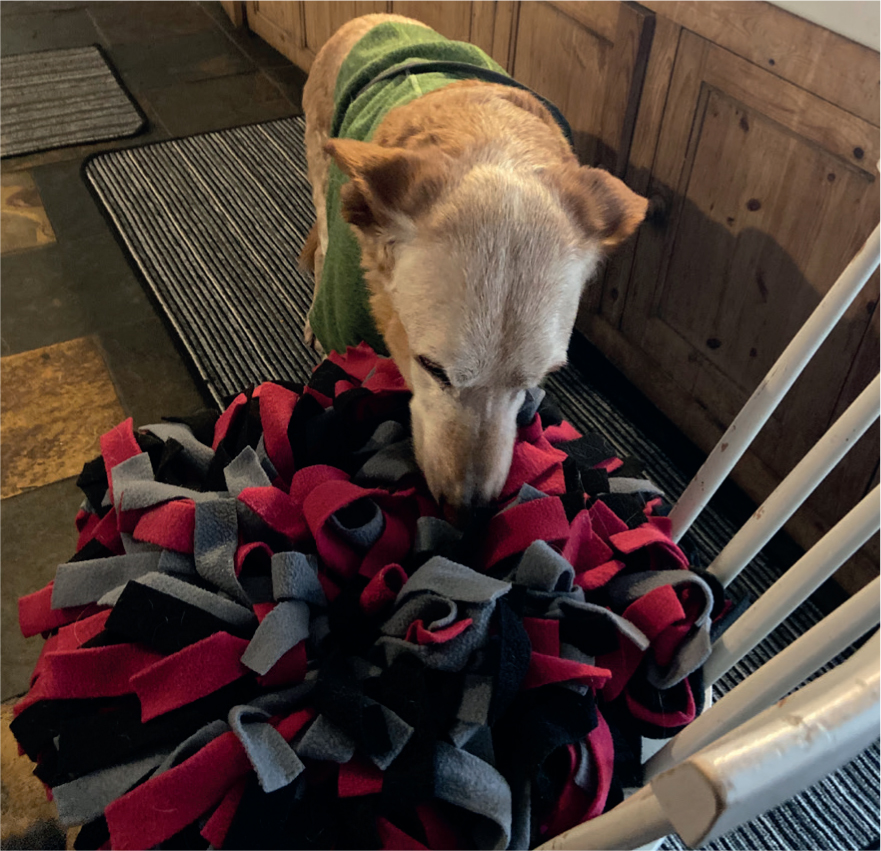
Food search activities should not be overly complicated, as dogs with symptoms of CDS have been found to have a diminished food searching ability (Romano et al, 2022).
In the veterinary clinic, consultations may need to go at a slower and gentler pace than the individual was once able to tolerate. Luring (using treats) may be needed to help move the dog around easily for examination, as response to visual prompts (hand signals) may decline. Consideration should be given to slippery floors, as older dogs may struggle to maintain traction on these surfaces. This may result in heightened stress and anxiety in a clinical setting and dogs may benefit from the provision of non-slip mats.
Social interactions
An increase in irritability may also be observed in some dogs with CDS. However, pain must be ruled out as a potential cause (Barcelos et al, 2015). Furthermore, some dogs may appear to not recognise their owners or familiar people (Landsberg and Araujo, 2005), although this may be influenced by sensory decline such as a decrease in vision or hearing.
These factors may also cause an increase in the dog's startle response, which may lead to aggressive behaviour. Owners can avoid startling their dog by approaching them more slowly and carefully, or speaking gently at a volume that the dog will more easily hear. This is especially important when approaching from behind or while the dog is resting.
After an absence, dogs may need additional time to recognise their owners. Being given the time to use all of their senses, including smelling their owner, may aid memory recollection.
An overall increase in vocalisation can be observed, such as dog barking at their owners. Reasons for this may include seeking to gain the owner's attention; however, there may be times when the dog is not satisfied with the attention and continues to bark, making it difficult for owners to identify the function of the vocalisation. In dogs that show no other signs of CDS, it is important to rule out behavioural and training-related issues.
During interactions with unfamiliar dogs, previously adequate social skills may become compromised by an increase in irritability or a lack of awareness of the other dog's body language. In addition to a decreased ability to ‘read’ the situation, senior dogs may find it physically difficult to move out of social encounters because of muscle degeneration or joint stiffness, which may hinder their ability to turn or back up.
Owners should be made aware of the importance of supporting their dogs by staying nearby during social encounters on their walks. If interactions appear increasingly tense or inappropriate, such as the other dog being too boisterous for a dog with CDS, owners can calmly move in between both dogs and gently encourage either dog away, or ask the other dog owner to help.
If the dog is socially motivated towards other dogs and/or people, maintaining some socialisation by arranging gentle social meetings with familiar and suitable dogs and people may buffer cognitive decline (Nippak et al, 2007).
Dogs with CDS can also bark at other dogs, seemingly without any provocation. Consideration needs to be given to dogs that reside in a multi-dog household. As senior dogs and dogs with CDS may lack spatial awareness, interactions between cohabitating dogs should be supervised to minimise conflict. Contexts with a higher risk of inter-dog conflict are feeding times, bottle-neck situations (hallways and doorways) or times of arousal, such as when visitors arrive or during play (Juarbe-Diaz, 1997). To prevent conflicts at times of higher arousal, dogs may benefit from being separated using stair gates or puppy pens. This can prevent dogs with CDS getting in the way of other dogs or getting knocked over.
Restlessness
A dog's well-established circadian rhythm may change, often leading to restless in the evenings and night time. The reasons behind this are currently not well established but are thought to be potentially as a result of a variety of factors such as a change in routine (reduction in walk duration and intensity), pain (finding it difficult to settle for longer periods of time), changes in perception because of dwindling senses, such as eyesight and hearing (Landsberg and Ruehl, 1997) and a diminished ability to go through the night without needing the toilet.
Dogs with CDS can often pace back and forth. The home environment should be adapted to help keep the dog safe and facilitate behaviours that help them cope. For instance, clutter should be removed from areas where the dog paces in order to avoid tripping. Their spatial orientation may become compromised (Figures 5 and 6) along with their physical ability to navigate tight spaces. Rugs and mats are crucial in preventing slipping when the dog paces. Owners should be given guidance on remaining patient with a dog that is pacing, as frustration and stress directed towards the dog may heighten their anxiety.
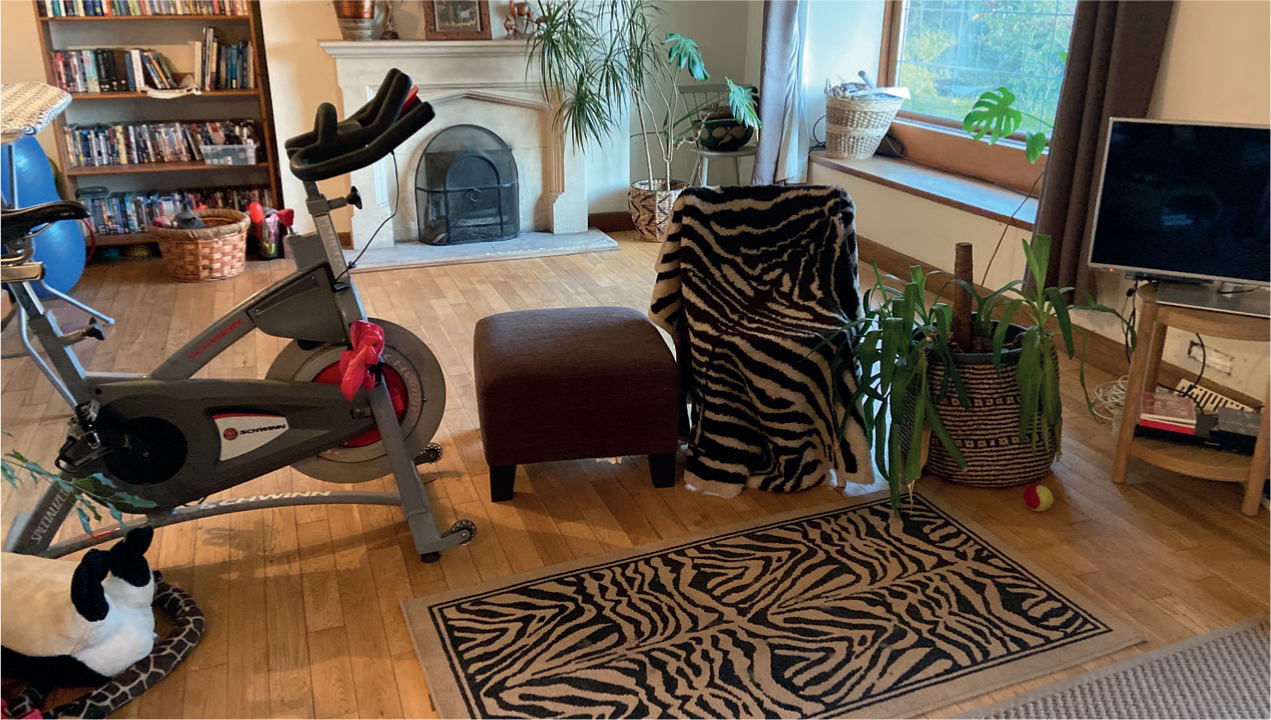
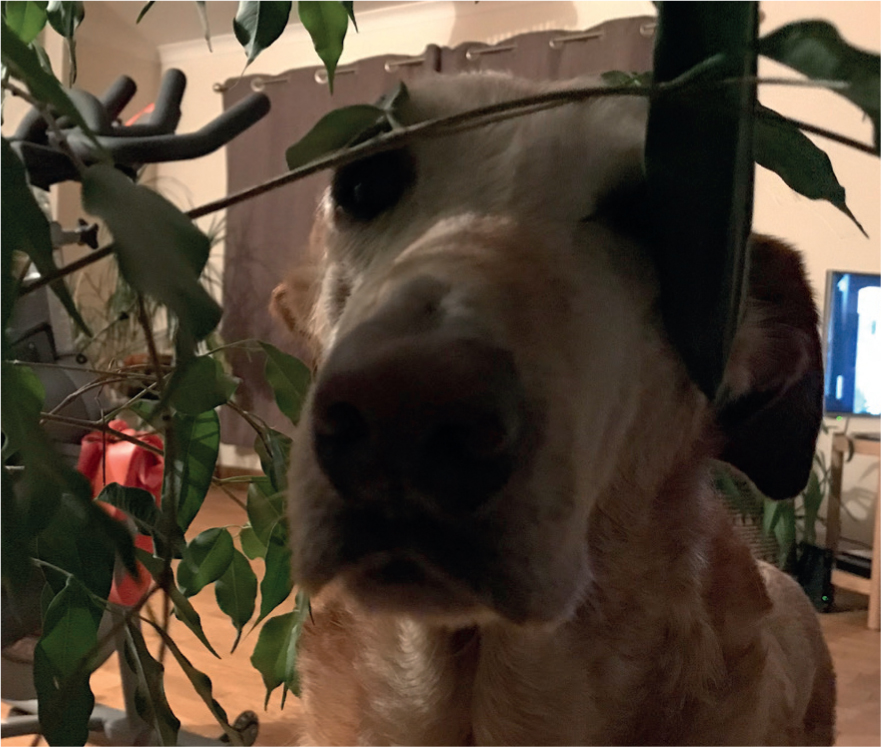
Furthermore, dogs with CDS may appear disorientated and lost on walks and in the home environment. Owners must recognise the importance of staying close to their dogs on walks to prevent them getting lost or feeling vulnerable.
Toilet training decline
It is not uncommon for dogs with CDS to develop issues with toileting; however, other medical causes must be ruled out (Landsberg and Araujo, 2005). Changes may include soiling their bed when visiting unfamiliar places, or following coming in from the garden or a walk. Degeneration of muscular and sphincter strength, reduced ability to signal to the owner and diminished recollection of previous toilet training may all play a role (Landsberg and Araujo, 2005). The author's dog would appear to need a poo with little warning — perhaps because of degrading signalling between the brain and sphincters muscles.
Trips to the garden may need to be made more frequent throughout the day to maintain toilet training. Therefore, access to and around the garden should be unobstructed.
Increase in fears and anxieties
Dogs with CDS may show an increase in fears and anxieties or an escalation of existing problem behaviours (Osella et al, 2007). This may be related to their diminishing senses (Szabó et al, 2018). An increase in generalised or situational anxiety may be observed, along with a reduced ability to cope while home alone (Landsberg and Araujo, 2005). Sound sensitivity or noise phobia may also occur. Pain should continue to be ruled out as a factor in these changes (Fagundes et al, 2018).
Owners should be made aware that changes in confidence and a diminished ability to cope with situations are normal, and that adjustments in expectations and the dog's routine may need to be made. Dogs with CDS will benefit from a predictable environment and routine because of their increased risk of becoming disorientated (Osella et al, 2007).
Some dogs with CDS that show an increase in fears and anxieties may further benefit from pharmacological support from their veterinary surgeon.
Conclusions
Canine cognitive dysfunction can be challenging for owners to live with. Managing expectations through increased understanding, adapting homes and routines to accommodate their dog's behaviour change, combined with veterinary support, can slow down cognitive decline while reducing stress in both owner and dog. This can promote increased enjoyment of those precious final months or years together.
KEY POINTS
- It is important to rule out pain and other age-related health concerns as a cause for behaviour change in senior dogs.
- Owners will benefit from learning about how to recognise symptoms of cognitive dysfunction syndrome (CDS).
- Training cues and enrichment can buffer cognitive decline, but must be set at a level where the dog can engage confidently and comfortably.
- Socialisation with human and dog acquaintances can buffer cognitive decline, although, the social behaviour and interactions of dogs with CDS may change and require more supervision and support.
- Dogs with CDS may show a decline in toilet training and an increase in anxious behaviours and restlessness.


